Only 15% of Croatian School Pupils Will Use Free Train Transport
October the 1st, 2021 - Croatian school pupils will more than likely be taking advantage of free train transport (which is intended for primary and secondary school students), but it will in fact only be used by a very small amount of kids.
As Poslovni Dnevnik/Darko Bicak writes, the Association of Croatian Bus Lines (UHAJLP) welcomed the introduction of free train transport for primary and secondary Croatian school pupils, but also warned that such a form of transport will ultimately be used by only a small percentage of students.
Namely, in the explanation of its decision on the introduction of free transport by Croatian Railways (HZ), the Croatian Government pointed out that it will be able to be used by about 780,000 children and students of primary and secondary schools throughout the Republic of Croatia, but this mode of transport is hardly the most popular.
While most Croatian school pupils live close enough to their schools to simply walk there from home, others arrive by bus, are driven there by their parents, or catch trams in Zagreb, trains are far from popular. In fact, transportation for daily commuting to school will be used by a mere 10 to 15 percent of Croatian school pupils who just happen to be living right next to the railway tracks.
“The basis for the introduction of free transport by HZ Putnicki prijevoz (HZ passenger transport) is the so-called the concept of a public service on the basis of which this carrier receives over 450 million kuna a year from the state and is an additional pilot project of the competent ministry, which will pay out an additional 30 million kuna to this publicly owned company over the next fifteen months.
Although there are of course legal preconditions to take into consideration, as well as obligations derived from European Union directives, this public service is not paid to entrepreneurs who transport students, workers and other passengers by bus on routes that are generally not economically viable, but only to state companies such as HZ or Jadrolinija,'' they stated from UHAJLP.
Commenting on the recent decision of Transport Minister Oleg Butkovic, Hrvoje Mestrovic, president of the Association of Croatian Bus Public Line Carriers, pointed out that out of the total number of primary and secondary school students, HZ transports a maximum of 15 percent per year, which is hardly a huge amount of kids.
Slightly more than a third of those Croatian school pupils are located in cities that have some form of public city transport which is also covered by public services, while half of the students depend exclusively on public line bus carriers, explained Mestrovic.
For more, make sure to check our our dedicated lifestyle section.
Brussels Pays Croatia Advance Tranche of €818.4 Million from Recovery Mechanism
October the 1st, 2021 - Brussels has paid the Republic of Croatia an advance payment from the so-called recovery mechanism, totalling 818.4 million euros, the largest single payment from the EU since the country's membership of the bloc.
As Poslovni Dnevnik/Ana Blaskovic writes, the Croatian state budget finally received a generous financial injection of 818.4 million euros, or 6.14 billion kuna, from the Belgian capital, more precisely from the recovery mechanism. This is, as stated, the largest single payout from the EU since Croatia's accession to the bloc back in July 2013, but it is also the only amount guaranteed to Croatia, as all other payments will depend on the fulfillment of promised reforms.
If Croatia does the job as outlined in the National Recovery and Resilience Plan, a non-refundable amount totalling a massive 47.5 billion kuna should reach the budget by 2026.
The government headed by PM Andrej Plenkovic announced on Tuesday that the money from the advance payment from the recovery mechanism "will be directed to reforms and projects that are the most ready and that can be realised first".
These include support for the Rimac Automobili's research and development project, investment in broadband access infrastructure and 5G network access, support for energy efficiency and renewable energy in industry, building decarbonisation projects, and water management projects which already have their project study documentation ready, as well as their tender documentation and building permits.
“Receiving advance funds for Croatia marks the beginning of the implementation of candidate investments within the recovery plan. After the phase of preserving jobs and economic stability under the circumstances caused by the COVID-19 crisis, we're committed to the reform process and the use of secured European Union funds for rapid economic recovery and development, with a clear direction and two transitions - digital and green," said Plenkovic.
The deadline for the implementation of all reforms and investments in the recovery plan is the 31st of August 2026. The Croatian national plan envisages 77 reforms and 152 investments and it is designed through five components and one initiative. 26.2 billion kuna relates to the economy, 4.36 billion kuna to public administration, the judiciary and state property, and 7.5 billion kuna to education and research.
2.09 billion kuna is planned for the labour market and social protection, while 2.56 billion kuna will be spent on the healthcare system. The "initiative" for the renovation of buildings will see 12 percent of the approved money, or 5.95 billion kuna, spent on it.
According to government projections, Croatian GDP in 2025 will be 4.2 percent cumulatively higher than it would be without the plan. In the last year of its implementation, meaning 2026, Croatian gross domestic product should be around 17 billion kuna higher than it would have been without the EU cash injection from the recovery mechanism.
For more, make sure to check out our politics section.
Zagreb Holding Reduces Losses in First Half of 2021 Owing to Cistoca Subsidiary
October the 1st, 2021 - Zagreb Holding is often splashed across the news for all the wrong reasons, but it managed to do well during the first half of 2021, reducing its losses quite significantly when compared to the same period back in pandemic-dominated 2020.
As Poslovni Dnevnik/Tomislav Pili writes, Zagreb Holding reduced its losses in the first half of the year according to the consolidated report for the group, and the biggest ''weight'' in terms of finances for the business came from its Cistoca subsidiary.
The announcement on the Zagreb Stock Exchange states that the group recorded 1.96 billion kuna in operating income in the first six months of this year, which is 7.4 percent more on an annual basis, and total revenues amounted to an impressive 2.02 billion kuna.
The biggest impetus for the growth of Zagreb Holding's income came from the business of gas supply and distribution by expanding to new distribution areas. Namely, Gradska plinara, which is part of Zagreb Holding, has been supplying eleven new distribution areas in as many as nine different Croatian counties since back in April.
It thus gained 45,000 new customers. This resulted in an increase in the Group's revenue by HRK 24.7 million, or 16 percent on an annual basis.
However, in addition to revenues, expenses also grew, by three percent to 2.08 billion kuna, so the group ended the first half of the year with a loss of 60.8 million kuna, and while that seems steep, it's an improvement when compared to the same period last year, when losses amounted to almost 140 million kuna.
“The overall results of the Zagreb Holding Group's operations continue to be greatly influenced by the operations of the Cistoca subsidiary. In this business segment, a loss of 85.7 million kuna was recorded,'' the aforementioned report states.
For more information on Croatian companies and their performances, make sure to check out our dedicated business section.
Michelin-Star Boškinac Visits Split for JRE Masterclass on Pag Lamb
October 1, 2021 - Chef Matija Kruhonja of Michelin-star restaurant Boškinac visited Split for a JRE masterclass on Pag lamb, accompanied by Korta Katarina wines.
On Wednesday, September 29, 2021, the culinary team from the famous Boškinac restaurant, which confirmed its Michelin star earlier this month, visited the Miele experience center in Split for a masterclass with restaurant chefs who are part of the prestigious JRE association.

The exclusive group of visitors had the chance to learn the secrets of preparing Pag lamb firsthand from experts for whom lamb is one of the most important foods in the award-winning restaurant. The chef of the restaurant, Matija Kruhonja, and his team revealed secrets and prepared one of Boškinac's most famous dishes.
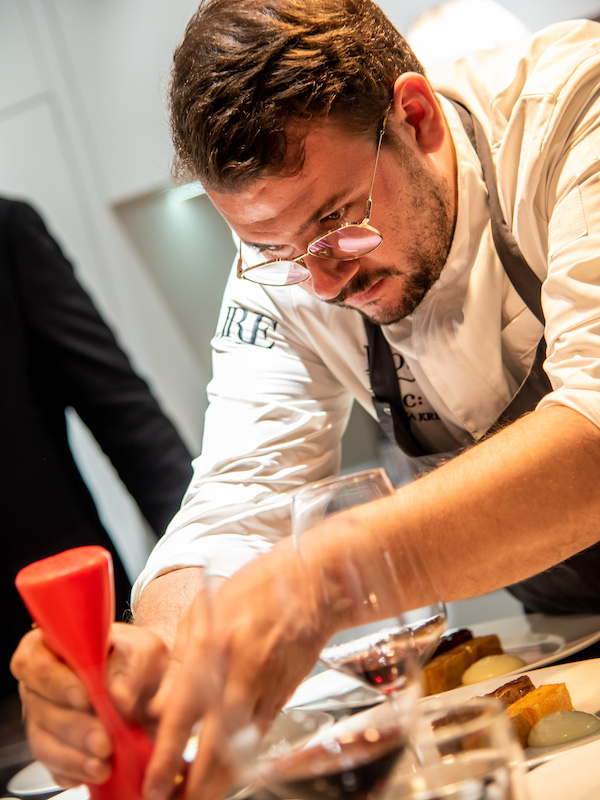
"Our topic was Pag lamb, the legendary terroir ingredient from the island of Pag. The masterclass went deep into the topic by showing various restaurant cuts. Why did we pick this subject? First of all, we wanted to educate the guests about the proper way of cutting the meat, then show them positions and explain which parts are good for certain dishes and last but not the least, prepare a dish - a current signature dish created by Boškinac chef Matija Kruhonja," Irina Ban of JRE.
Chef Matija Kruhonja also showed the knives he used and explained the animal's anatomy, which has to be respected if one wants to make precise and correct cuts.
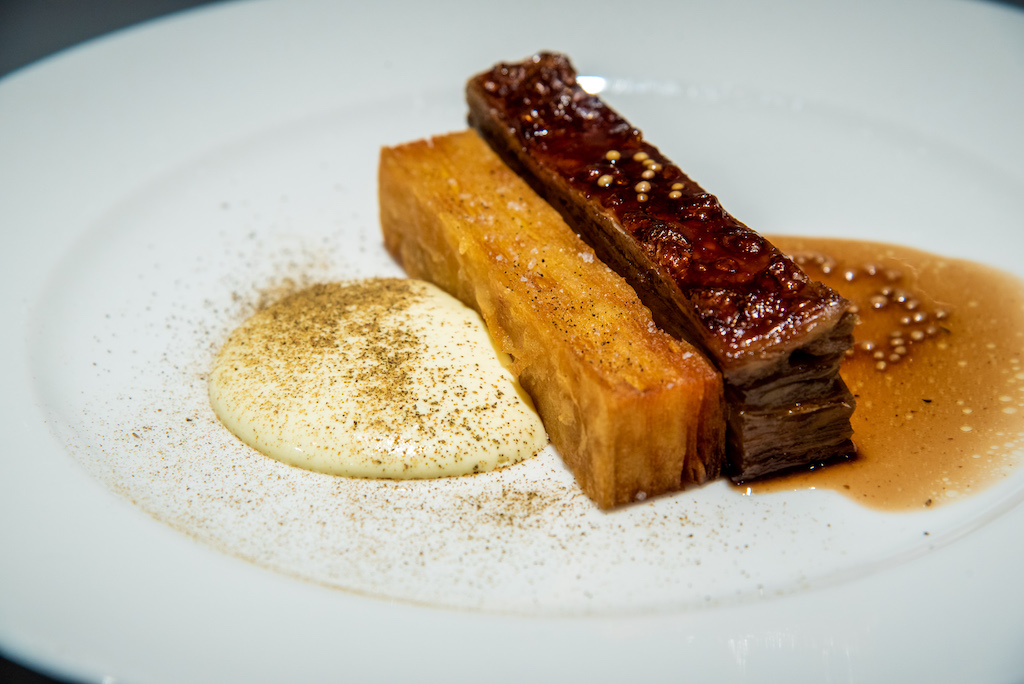
"We also discussed that Pag lamb is much smaller than other European varieties due to the lack of food and hostile terrain, but its meat has a stronger flavor due to that same reason - animals are on pasture which is mostly consisted of aromatic herbs, covered with sea salt. Such conditions make an animal more muscular, less fat, and smaller," added Ban.
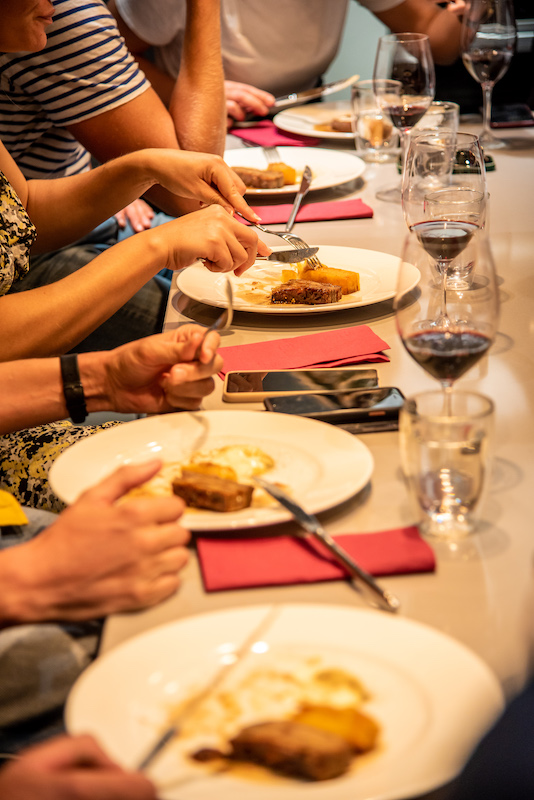
The lamb was paired with wines from Pelješac winery Korta Katarina: sparkling Sabion, Plavac Mali - Winemakers Selection 2011, before ending the evening with Boškinac red Cuvee as a gift of the house. All wines were presented by Boškinac sommelier Mladen Livaja, one of the best sommeliers in Croatia.
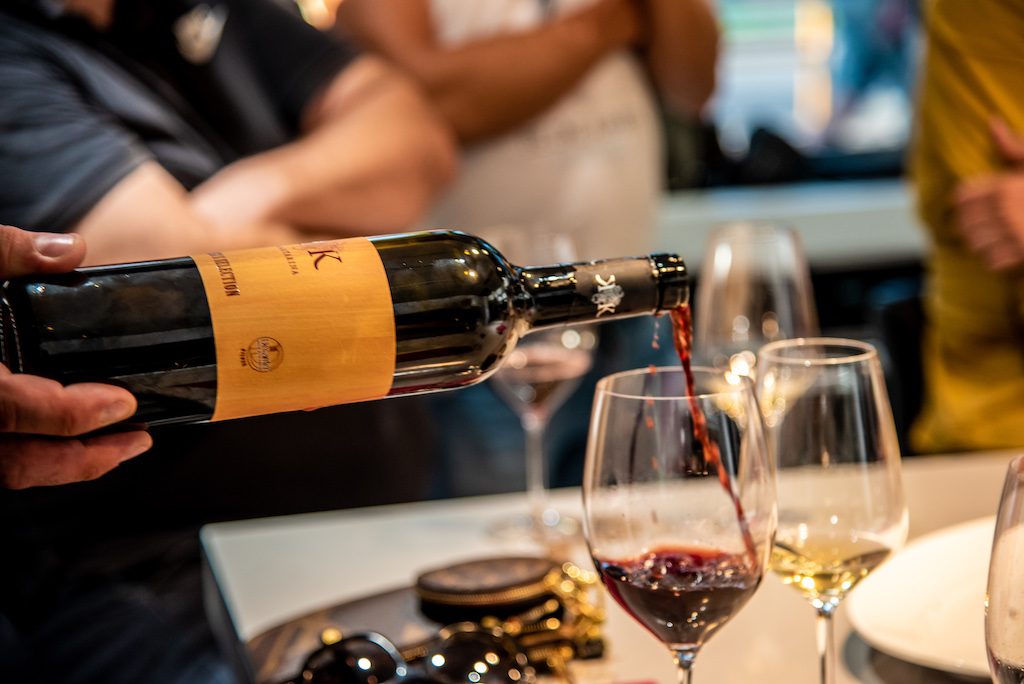
Jeunes Restaurateurs (JRE) Croatia is a prestigious association of the most creative gastronomes, and the Croatian branch has 16 restaurants. Founded in 1974, it has about 350 of the best young top chefs and restaurant owners in Europe. JRE chefs combine outstanding talent, a deep passion for cuisine, a love of local produce, and a strong sense of tradition. Their cooking expertise, paired with the outstanding atmosphere of their restaurants, offers a truly fantastic experience. JRE organizes masterclasses with chefs from the best Croatian restaurants who are also members of this prestigious association several times a year. Until now, they were completely closed to the public.
For more on lifestyle in Croatia, follow TCN's dedicated page.
Vukovar Franciscan Monastery Virtual Tour: New Screen Tourism Addition
September 30, 2021 - The Vukovar Franciscan Monastery Virtual Tour is a new addition allowing people to get better acquainted with this amazing tourist site even if you cannot travel to this Eastern Croatian town.
We wish you a pleasant tour filled with God's grace - says the robotic female voice as you click this link and start exploring Vukovar's Franciscan Monastery online. The recently launched option of 360° sightseeing this iconic location in the Eastern town of Vukovar in Slavonia (referred to as the ''Hero City'' due to its suffering in the Homeland War) is an excellent innovation for what's become known as "screen tourism". Whatever your reasons for not being able to physically get to Vukovar at the moment, the Vukovar Franciscan Monastery Virtual Tour is always ready for you to take part.
''The QtouR virtual guide is implemented in the entire complex of the Franciscan monastery in Vukovar, covering over 3,500 square metres. The virtual tour offers visitors an online tour of the museum over two floors, the church, the script, the bell tower with the watchtower, the wine cellar…'' listed the Culture.net website.
Indeed, with this app (its development helped by the Croatian Ministry of Culture), you can explore the Franciscan monastery from every angle you'd usually be allowed to see during your visit. You can either navigate with your mouse or mousepad or even your keyboard to choose which direction you want to go in. From exploring indoors to heading out into the back yard, you can even soak up the breathtaking view of the nearby Danube river.
''Franciscans have had their presence noted in Slavonia and Srijem ever since the 14th century. Sadly, during the Turkish (Ottoman) occupation of these parts, every historical record of their activities was destroyed. Some traces can still be found in various documents of the Franciscan order and in the Vatican archives, however. What we know for sure is that the Franciscans of the Bosne Srebrene (Silver Bosnia) were the only messengers, bishops, priests, and guardians of the Catholic faith in these areas under Ottoman rule,'' reads the official website of Vukovar's Franciscan monastery.
Both the monastery and the church are named after saints Filip and Jakov (Phillip and Jacob). The church was completed in 1733 while the monastery was built in 1736.
''The monastery, along with the church with its monumental architecture, has been home to priceless artistic and cultural treasures for centuries now. It possessed a rich inventory and a library with rare editions along with a small picture gallery. By the sheer complexity of its heritage, it was placed amongst the most valuable memorial sites in continental Croatia,'' explains the monastery's official website.
The history of Vukovar is often clouded by the tragedies of the Homeland War, but while that is and will forever be of enormous significance, there is much more to it than that.
As TCN wrote, the history of Vukovar runs much deeper than the horrendous events which took place at the end of the 20th century, and Croatian historical and social sciences are more than aware of the fact. This was evident in the presentation of the book ''The Cultural Identity of Vukovar – A Contribution to Investigating Heritage and Successors''.
Additionally, as evidenced by the VukovART festival earlier this year, we can see that this town at the very border of Eastern Croatia and Serbia has much more to offer than just the memory of death, war crimes and misery brought about by bullets, hate, and war.
Learn more about Vukovar in our TC guide.
For more about history in Croatia, follow TCN's dedicated page.
ABA League: KK Split Loses to Partizan Belgrade 59:69 (24:38)
September 30, 2021 - Two losses for Split and two wins for Belgrade in their first games in the ABA League.
First Red Star then Cibona and now Partizan. You can call it a classic season opener for the "Yellows". While the first ABA league game in Belgrade did not go well, KK Split was able to beat Cibona Zagreb 73:62 at home to start the Premijer Liga on the right foot.
Split's newly appointed head coach, former team captain and assistant coach Srđan Subotić, expects repeating good games on the home court, and most importantly a big step forward compared to the devastating 97:61 loss in the 1st round of ABA League against Red Star.
"Against Cibona, it was seen how much wind in our backs the return of fans in the bleachers gave us. We will get back at them, this is a derby, we are motivated and ready, we will do all to keep the points at home for our fans at home," were the Split coach's words before the game.

Burak Canboy
At Gripe, the second game in the ABA league started slow for the home team, while legendary guest coach Željko Obradović saw his team take a 5:0 lead which Partizan was able to increase to 11:3 before Split got into the game and closed the first at 15:17 immediately after giving away their first lead of the match.
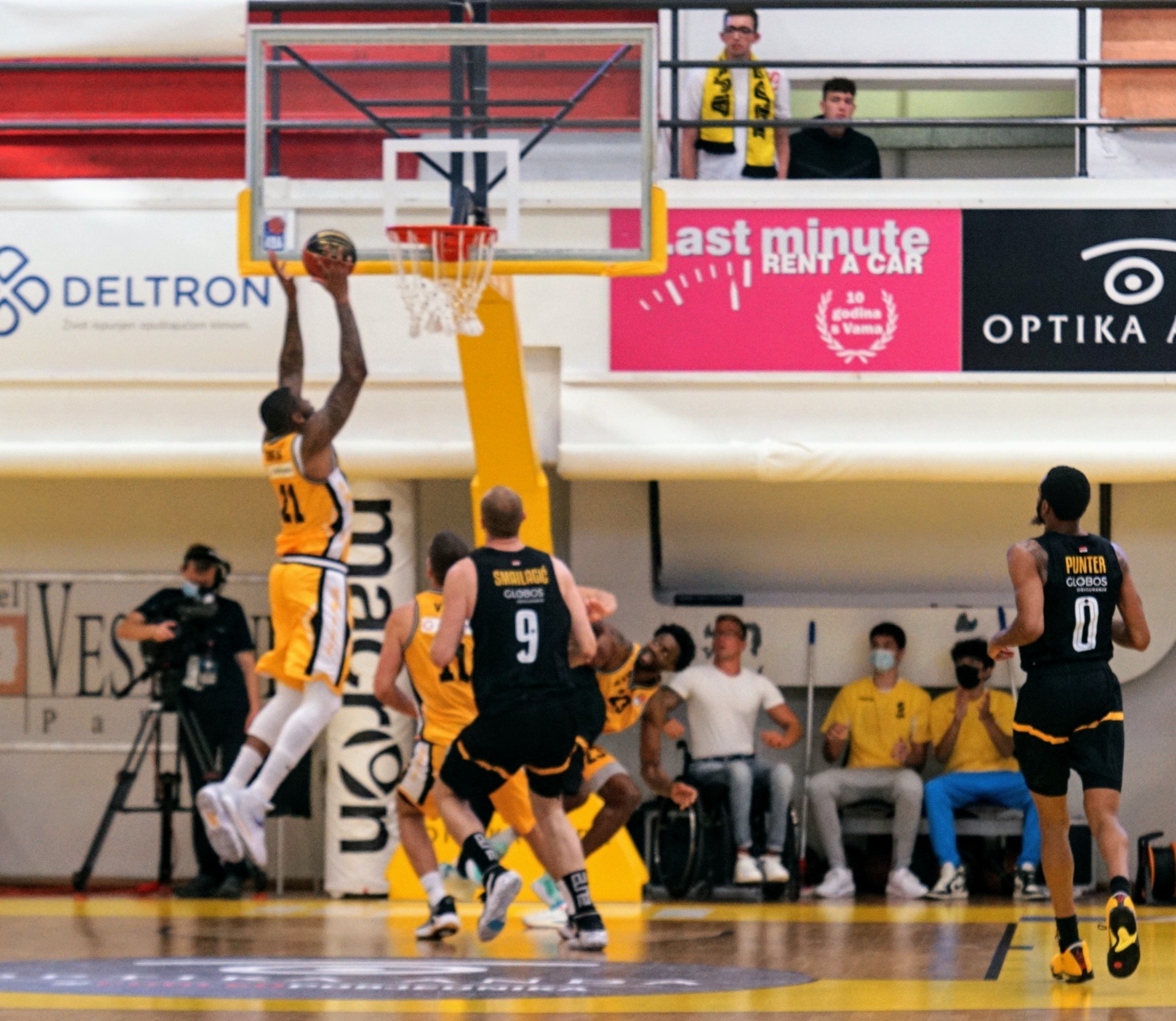
Burak Canboy
A very low shooting percentage was the reason why KK Split lost control of the game during the second quarter and had to watch Belgrade score attack after attack to take a 38:24 lead at halftime.
Tonko Vuko's buzzer-beater to finish the third quarter 43:53 marked the only quarter Split was able to win (19:15) was also the signal for the "Yellows" to start the last effort to come back.
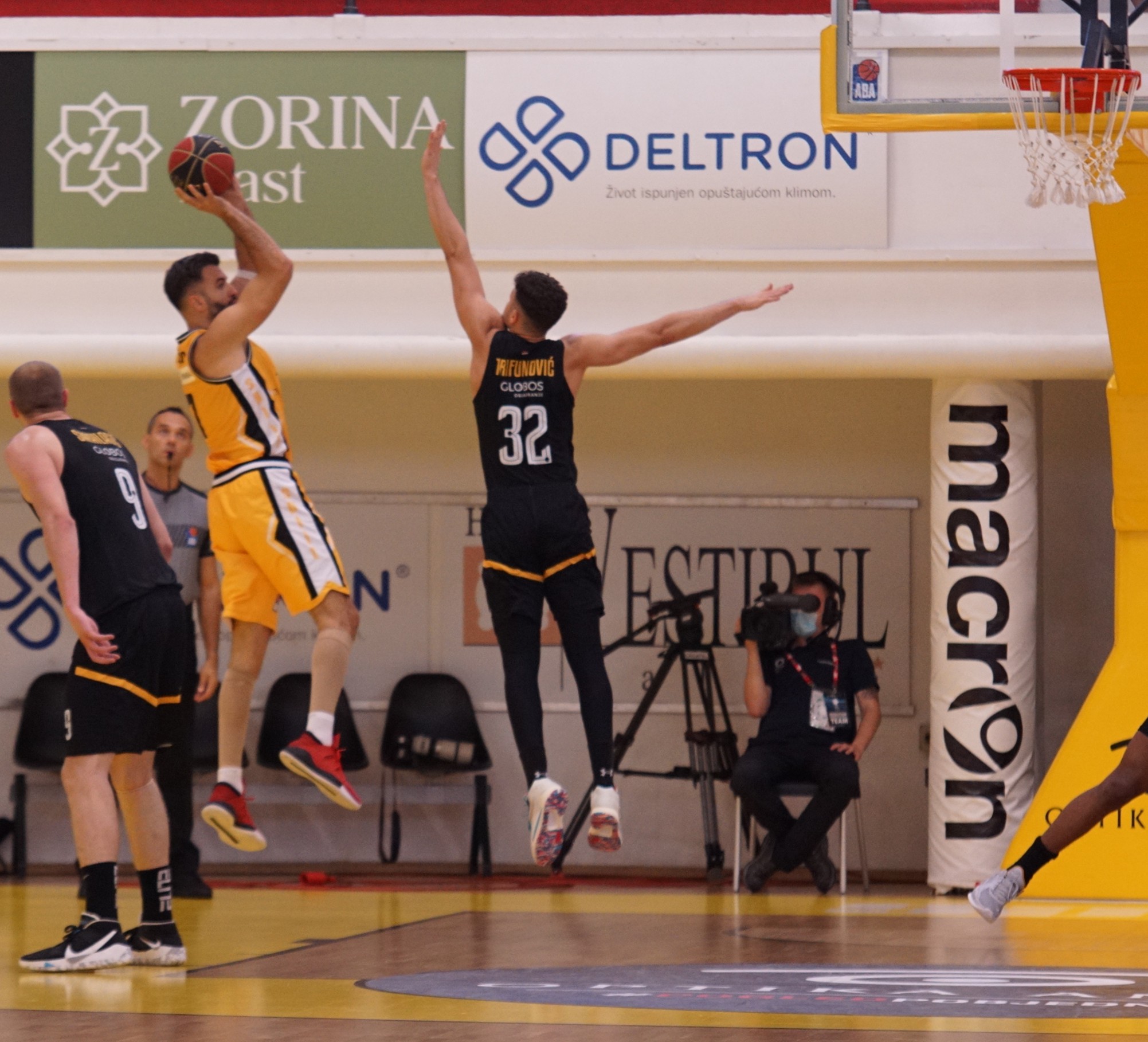
Burak Canboy
Three three-pointers by Toni Perković gave Split some momentum and got the home crowd from their seats in the final quarter of the game. However, the routine of Belgrade was enough to regain control and safely take the points home.

Burak Canboy
Perković was the only player in double digits for Split (17), LeDay (15 points, 10 rebounds) and Smailagić (12 points) were the top scorers for Partizan Belgrade.
Referees: Igor Dragojević, Miloš Koljenšić, Ernad Karović
Box score:
https://www.aba-liga.com/match-live/8/21/1/Overview/q1/1/home/split-partizan-nis/
To follow the latest sports news in Croatia, follow TCN's dedicated page.
To learn more about sport in Croatia, CLICK HERE.
Petrinja Container Business Centre Breathes Life into Post-Quake Town
September 30, 2021 -The New Life Centre is a Petrinja container business centre offering locals the chance to go back to their businesses as the town still awaits the completion of its post-earthquake reconstruction.
The container settlements of Petrinja, the aftermath of the December 29 earthquake, are certainly not a cheery place to live as the locals await the reconstruction of their Central Croatian town to be completed.
The reconstruction process isn't over just yet, but the spark of hope for a new, better life after a tough year can be seen with the opening of the New Life Centre.
''The New Life Centre is a cluster of new, painted containers that have been stacked for months in Petrinja's neighbourhood of Sajmište,'' as described by Miroslav Šantek, the author for the local website PS-Portal. The first traders, workers, and craftsmen have already settled in, happy for a taste of near normality.
PS-Portal states that this idea was suggested by the Voice of Entrepreneurs Association (Udruga Glas Poduzetnika) to the then-mayor of Petrinja, Darinko Dumbovic.
''The idea was accepted, and then work on the infrastructure began. But, in typical Croatian fashion, there are always setbacks. The obvious lack of money slowed down the progress. Then came new town administration and new mayor Magdalena Komes who cooperated with the Croatian Government and got 30 million kuna to continue the construction of the centre,'' explained PS-Portal.
The deadlines, however, have been breached and it is uncertain when the Petrinja container business centre will actually be finished.
Nonetheless, business owners who could no longer wait for the complete conclusion of construction set up their businesses and started to work as the state aid dried out, and they wanted to go back to making a living for their families.
As PS-Portal continues, yesterday's opening morning was cold, but there was joy on that small square of container settlements. Citizens of Petrinja can now enjoy the offer of a big international cosmetic chain, but also smaller shops, a pizzeria, and grill diners run by local entrepreneurs.
Despite the lack of a grand opening due to ongoing construction works, Mayor Komes still visited and talked to entrepreneurs who started their businesses. She explained that the increase of construction material and the lack of construction workers are the reason for delays in the Petrinja container business centre's completion.
''Numerous Petrinja-based entrepreneurs lost their space to work after the earthquake. They worked in containers or in the few rental spaces one could find in the almost destroyed town. This modular centre is designed as a space for everyone who has lost theirs,'' writes Glas Istre.
The December earthquake in Petrinja, as well as the March earthquake in Zagreb, caused lots of problems for the residents of these areas. As TCN previously wrote, after a whole year of slow reconstruction progress, Croatian PM Andrej Plenković promised to speed up the reconstruction processes in September. Back in July, several education institutions got financial support for reconstruction, while museums, such as the School Museum in Zagreb, still awaits help.
The dreadful experience of the earthquake in Sisak, Zagreb, and Petrinja also woke up Croatian artists, such as Miroslav Arbutina Arba. You can see his photos of the Sisak earthquake in the Zagreb Contemporary Art Museum exhibition until October 10.
Not too far from Petrinja is Lonjsko Polje Nature Park, and you can learn more about it in our TC guide.
For more about entrepreneurs in Croatia, follow TCN's dedicated page.
Zagreb University Student Council: Lavish Expenses By President Mihovil Mioković
September 30, 2021 - The Zagreb University Student Council president Mihovil Mioković has published the expenses of the council. 700,000 kuna spent on questionable things stirred up quite the controversy.
Established on September 23, 1669, Zagreb University remains the oldest and biggest university in Croatia to this day, but sadly, it has plenty of issues with the current University Chancellor Damir Boras.
As TCN wrote earlier in March of 2021, the Independent Union of Research and Higher Education Employees of Croatia ousted both Boras and Vice-Chancellor Miljenko Šimpraga. The causes of that were, as the Union said, various violations of academic community principles and the laws prescribed by both Croatian University documents and Zagreb University documents.
''On a number of occasions, Boras violated the academic rights and freedoms of employees of the Zagreb Faculty of Humanities and Social Sciences as well as their right to elect the faculty head by rejecting the candidates recommended by the Faculty Council on three occasions,'' said the Union at the time.
As Telegram's reporter Dora Kršul, with a history of exposing foul play at the university wrote for Telegram earlier this week, the Zagreb University Student Council has its own dirt too.
Mihovil Mioković, the president of the Zagreb University Student Council (who is otherwise a student of the Faculty of Economics) and a party member of the Croatian Democratic Union (HDZ) allegedly spent 700,000 kuna from the university budget on highly questionable things. Mioković, previously noted for defending Boras's controversial decisions, published reports of the council's spending over the last two years on social media.
''Two MacBook computers, a Lenovo ThinkPad computer, countless promo T-shirts, badges, Samsung Galaxy phones, a paper shredder, communication training for the council's president (for Mioković himself), a Galko business bag and some loudspeakers are just some of the expenses the Student Council spent 700,000 kuna on. As visible from the documentation published by the council's leader, signed receipts were sent to be paid to Tonći Lazibat, the finance Vice-Chancellor and potential candidate for the new Chancellor of Zagreb University,'' wrote Telegram.
It's worth adding that Chancellor Boras has already won two terms, so he can't compete in the upcoming election in February 2022. Thus, the question of who will run for Boras's replacement remains an open question. Mioković responded to Telegram's questions stating that these are small and justified expenses.
''I think it's much more effective to have everything seen in black and white, all of the finances, everything I signed, because these are literally small expenses, receipts totalling 100 to 150,000 kuna,'' said Mioković to Telegram.
From expensive phones to the communication training Mioković didn't even complete in the end, the biggest outrage was triggered by the Galko Business bag. Usually costing around 1,500 kuna, Mioković said he got it at a discount for 1000 kuna and added that he bought it because he didn't receive a bag along with his newly purchased laptop.
''It's a leather bag that will really serve to future generations of the student council once I return it along with the laptop. The rain can't ruin it, it's of good quality,'' said Mioković in an attempt to justify the expenses. These justifications, however, weren't really well received by the public.
From various student initiatives (the biggest one being 300=300, which mainly advocates for the equal qualification recognition of state and private universities) previously protested against the current university leaders to the student council itself.
As Večernji List reported, the unsigned thread on the Facebook page of the Zagreb University Student Council condemned Mioković's actions and called for his resignation. Additionally, Mioković left HDZ and told N1 that he was "advised“ to do so.
''I was contacted by someone on a local level, who, in my opinion, doesn't have any legitimacy nor authority. Then I contacted the HDZ youth president who advised me to leave the party and I said OK,'' Mioković said briefly for N1. He added he feels his conscience is clear and that he plans to run again for the council president despite the lack of support from HDZ.
To top it all off, as Srednja writes, the Student Council of Zagreb university also celebrated 25 years of its work this week.
''Through all the years, the goal of student representatives is to protect the rights and promote interests of students,'' wrote Srednja.hr. There can be no doubt, however, that these recent events added a bitter taste to the jubilee.
Read about Croatian politics and history since 1990 on our TC guide.
For more about education in Croatia, follow TCN's dedicated page.
New Law On Croatian Science Foundation
ZAGREB, 30 Sept 2021 - The government on Thursday sent a bill on the Croatian Science Foundation into the parliamentary procedure, proposing that the Foundation, which currently has the status of a non-profit organization, acquire the status of a state budget user.
The Foundation was established in 2001, and the new bill was sent to the parliament since the existing legislation is outdated and does not regulate the system for funding science in a way that would be in line with all demands of the current Croatian and European research area.
"The new bill is a key point for the implementation of reforms planned in the National Recovery and Resilience Plan (NPOO), with the aim of raising Croatia's research and innovation activities and potential," Science and Education Minister Radovan Fuchs said.
In order to boost the efficiency and functionality of investments in science projects and enable the implementation of programs planned within the NPOO, he said, it was proposed that the exact names of programs be deleted.
"In this regard, and in order to make the programs easier to adapt to the framework of financing research, development and innovation, it has been proposed that the types of programs be determined by the Foundation's general acts," the minister explained.
The new bill also regulates issues that are not currently regulated, for example, that the Ministry of Science and Education be in charge of the founder's rights and obligations, as well as the supervision over the legality of the Foundation's work and actions.
In order to improve the quality and transparency of financing science projects and programs, it has been proposed that a new expert body of the Foundation is established, a complaints commission and that the possibility of objection is defined, which has not been possible until now. Also, the principles of the work of the Foundation have been clearly defined, and the definition of the Foundation's users has been changed.
For more about politics in Croatia, follow TCN's dedicated page.
Croatia's Coronavirus Update: 1,710 New Cases, 12 Deaths, 741 Hospitalizations
ZAGREB, 30 Sept 2021 - In the last 24 hours, Croatia has conducted 9,674 coronavirus tests, and 17.7% of them, or 1,710 have returned positive, the national COVID-19 crisis management team reported on Thursday.
There are now 8,875 active cases. Of them, 741 are hospitalized patients, including 94 placed on ventilators.
In the last 24 hours, the COVID-related death toll has increased by 12 to 8,640.
Since the first registered case of the infection with the novel virus in Croatia in late February 2020, over 2.83 million tests have shown that 404,790 persons have caught the virus, and of them 387,275 have recovered, including 924 recoveries in the last 24 hours.
So far, Croatia has administered nearly 3.43 million vaccine doses, and 44.78% of the total population, or 53.73% of adult Croatians, have been vaccinated.
The share of the adult population fully vaccinated stood at 50.49% on Thursday.
For all you need to know about coronavirus specific to Croatia, make sure to bookmark our dedicated COVID-19 section and select your preferred language.


